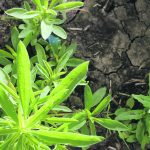Weeds know no borders, of course, so when weed trouble or a resistance issue surfaces on the northern U.S. Plains, there’s a decent chance of it turning up somewhere on Canadian cropland sooner or later. “Folks in Manitoba and Saskatchewan will often look south, and we also often look north for the problems our neighbours […] Read more
Tag Archives waterhemp
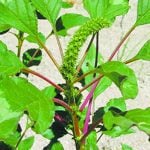
Problematic weeds prolific seed producers
Both Palmer amaranth and waterhemp can growly very quickly — up to two to three inches a day in optimal conditions -— and they’re also prolific seed producers, which enables them to quickly take over fields if the plants aren’t effectively controlled. When there’s direct competition with crops, these weeds can produce up to 100,000 […] Read more
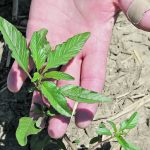
Canola, cereal crops slow waterhemp’s spread west
CLANDEBOYE, Man. — Soybeans and waterhemp go together in Manitoba like peanut butter and jelly. Find a field of soybeans and you may find waterhemp. “That’s almost always where we find it,” said Kim Brown, provincial weed specialist with Manitoba Agriculture. Tall waterhemp is a Tier 1 noxious weed in the province, which means it […] Read more

Seed multiple soybean varieties
An Ontario soy expert says growers should plant at least three varieties to help find the best fit for their farm
WINNIPEG — Horst Bohner is convinced that farmers should plant more than one variety of soybeans. If they don’t, they are making a “mistake.” “As a basic starting point, I think every grower should seed at least three varieties. Every year. As a minimum. Hopefully more than that,” said Bohner, the soybean specialist for the […] Read more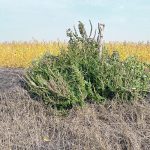
Waterhemp expands in Manitoba fields
Farmers are advised to collect suspected waterhemp plants instead of putting them through the combine
Manitoba Agriculture’s weed specialist urges farmers to watch for waterhemp in their fields during harvest and avoid spreading it with the combine. “Just do not put those weeds through the combine because … you’re in for a world of hurt once these things take a hold here,” Kim Brown said Sept. 1 while taking suspected […] Read more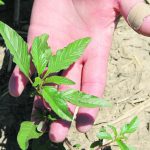
Herbicide tolerant weeds spread up the Red River Valley
North Dakota farmers struggle to manage invasive weeds, and Man. producers have much to learn from their experiences
FARGO, North Dakota — You don’t have to take the dangers of herbicide resistant weeds seriously. Some farmers in North Dakota didn’t, daring to grow soybeans on soybeans three years in a row after resistant waterhemp showed up in their fields. “You can go from a few plants to (having waterhemp) across the field in […] Read more
Waterhemp’s genetic adaptations discovered
Genetic mutations make it possible for the weed to rapidly adapt to agricultural conditions and environmental changes
A single waterhemp plant can grow 2.5 centimetres a day and, in a growing season, each single plant can produce up to 4.8 million seeds.
